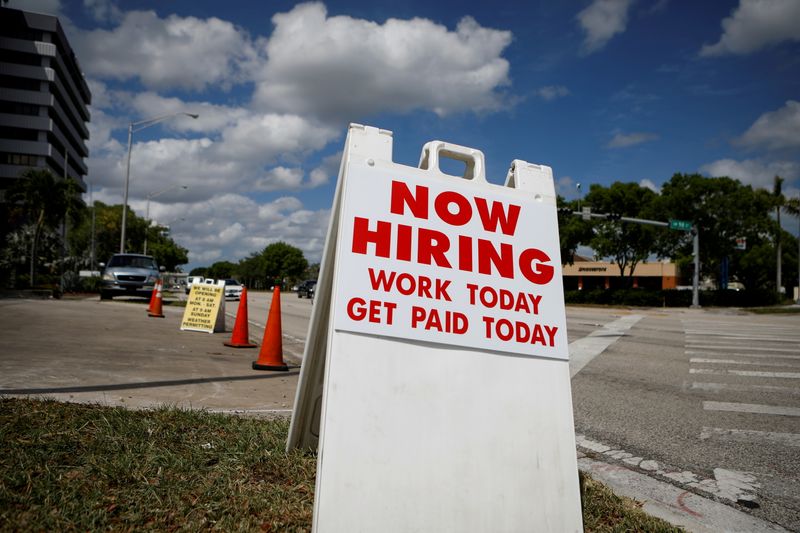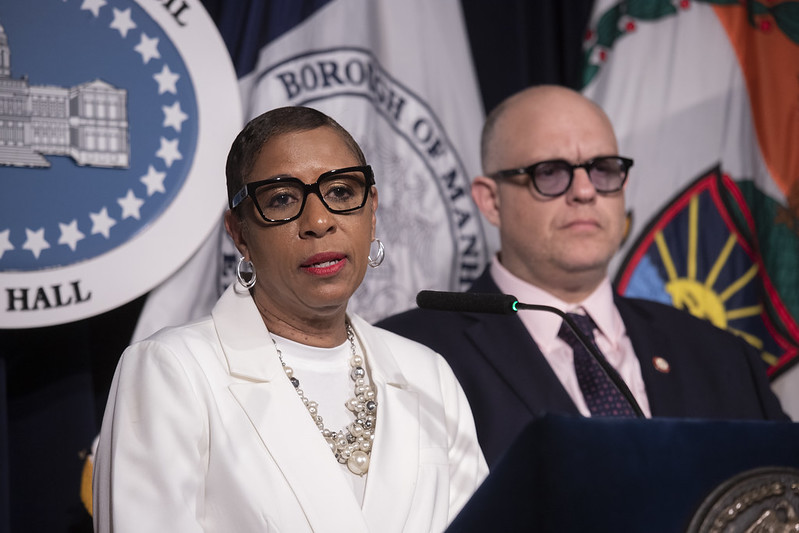WASHINGTON (Reuters) – U.S. states putting an early end to federal unemployment benefits saw a larger jump in local labor supply in June than those planning to maintain the $300 weekly supplement until early September, new data show, though there was no clear sign it had led to significantly more hiring.
State-level jobs data released earlier this month show that in the 26 states stopping benefits early an additional 174,000 people joined the labor force in June, by either taking jobs or beginning work searches, compared to 47,000 in the other states.
While that may indicate the withdrawal of benefits is having some of the impact intended by the governors who cut off the stipend, and causing more people to seek employment, the numbers are small in a national labor force of 161 million and come with a cautionary note: Job gains in both groups of states were roughly the same.
That could be the result of lagging data, since the survey that produces national and state job estimates ended its June round before the benefits actually ran out in most of the states planning to end them early.
But it could also mean the process of matching employers and employees remains sluggish compared to the large numbers of posted job openings and the large numbers of unemployed – a fact some economists say could mean the benefit cuts may merely end up reducing family income.
“We find only a marginal effect” of the benefit reductions on labor supply and employment, wrote Gregory Daco, chief U.S. economist at Oxford Economics. “As such, benefits discontinuation may end up doing more bad on the personal income ledger than good on the employment ledger of the economy.”
Goldman Sachs economists also found little evidence yet that the cessation of benefits across a group of mostly Republican-led states was having much impact on labor markets that continue to puzzle Federal Reserve and other officials.
Continuing claims for unemployment insurance are dropping faster in the states ending benefits, a sign that people may be moving into jobs.
But based on the available data, “on net … benefit expiration did not provide a boost to June employment,” Goldman Sachs economist Ronnie Walker wrote recently. The full impact of the policy change, however, will not be “fully visible” until state-level jobs data for July is released in mid-August.
At that point, the additional federal unemployment benefit will be nearing its national expiration. Coupled with the reopening of schools, that is expected to give a clearer view of how fast U.S. employment might regain the jobs lost at the onset of the coronavirus pandemic in the spring of 2020.
So far, Bank of America economists wrote last week, the experiences in states ending benefits early “suggest more generous benefits did not have a strong negative impact on employment … Labor constraints could persist beyond the fall” when the benefits expire nationally.
<^^^^^^^^^^^^^^^^^^^^^^^^^^^^^^^^^^^^^^^^^^^^^^^^^^^^^^^^^^^
Red state roll off https://graphics.reuters.com/USA-ECONOMY/EMPLOYMENT/jznvnydjmpl/
A (mostly) red state roll off A (mostly) red state roll off https://tmsnrt.rs/3gNC2Xk
Labor markets and unemployment insurance https://tmsnrt.rs/3wNuGb1
Unemployment insurance https://graphics.reuters.com/USA-ECONOMY/JOBS/nmopaxxzxva/
^^^^^^^^^^^^^^^^^^^^^^^^^^^^^^^^^^^^^^^^^^^^^^^^^^^^^^^^^^^>
(Reporting by Howard Schneider; Editing by Dan Burns and Paul Simao)



















